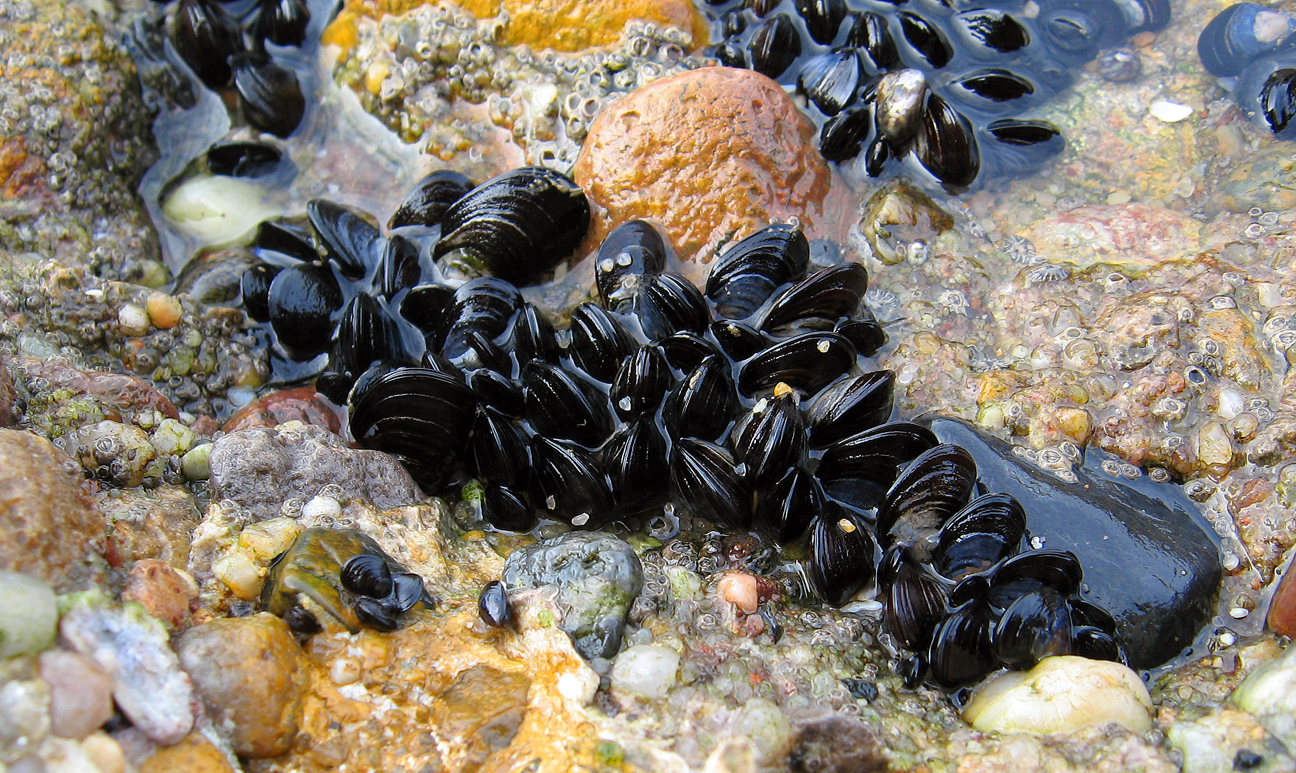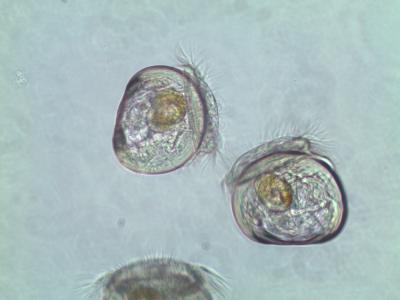
Mussels are bivalves in the phyum mollusca, as are clams and oysters.
In all bivalves it’s specialized cells in the mantle that build the shell using proteins and minerals. Calcium carbonate is the main mineral found in shells. Calcium carbonate comes in two different types of crystals. One is called calcite. The other form is aragonite. These crystals have a different arrangement of calcium carbonate. Both calcite and aragonite are found in seashells.
Climate Change Effect on Shells
The chemistry of the ocean is changing due to climate change: it’s becoming more acidic. As we explain in the blog this month, a more acid ocean means there is less calcium carbonate available for shell building. The aragonite crystal of calcium carbonate is even harder to use in an acidic ocean. For some shelled animals that might mean thinner shells or shells more susceptible to corrosion.
Our SOL video and mollusc resources have lots of information about molluscs.

Bivalve susceptibility to less calcium carbonate varies depending on their developmental stage. Most larval shellfish use aragonite to build their shells before they change into the adult form. This prevents healthy populations of clams, oysters, or other shell-building animals from long-term survival because their larvae may not survive long enough to replace them.
Messing the Mussel Beds
California mussels live in dense beds on rocky shores along the west coast from Mexico to Alaska. These beds provide habitat for hundreds of species of plants and animals that make a mussel bed their home. How are mussels doing with an acidifying ocean? One way to know is to compare data across decades in mussel beds, which scientists at UC San Diego have done.
Which Mineral is Most Important for Shell Formation: Calcite or Aragonite?
James Dodd, a UC San Diego scientist who collected and analyzed mussel shells along the west coast in the 1950s, was interested in which minerals adult mussels used to form their shells: calcite or aragonite? Dodd found that along the coast where ocean temperatures were colder, the mussels mainly built their shells from calcite. But, in the warmer, southern waters, they mainly built their shells from aragonite.
Are Mussels Adapting to Changing Ocean?
More recently, Dr. Elizabeth Bullard looked at Dodd’s work and compared mussel shells that he collected in the 1950s to those she collected from near southern California to Washington state in 2017-2018. She found that now instead of a clear difference in mineral composition between northern and southern waters, mussels use manly calcite instead of aragonite to make their shells. Aragonite is more soluble in acidic waters than calcite, so calcite is easier to use in waters affected by ocean acidification.
Bullard and her colleagues were surprised to find that the changing amounts of carbonate availability, not temperature, played such a strong role in influencing shell composition. Are the mussels adapting to changing ocean chemistry in this short time period?
In another study of west coast mussels, scientists from UC Santa Cruz surveyed mussel beds in California and Oregon, looking at the effects of low-pH seawater, food availability, and temperatures on the growth and strength of juvenile mussels at each site. This was essentially a natural experiment on variability. They also tested the strength of mussel shells from each site by drilling a hole, like natural predators can do.
What Makes a Mussel Grow Faster?
The results showed that the ability of mussels to cope with more acidic conditions depends on food availability. The lower the pH, the more energy it takes to build a shell, so food is critical for how well mussels can cope with ocean acidification. The study also showed that mussels actually grew fastest at sites with frequent natural low pH conditions as well as an abundant food supply. The study points to site-specific management of rocky shores where mussels live and that in some places mussels will be more resilient while in others they will be more vulnerable to changing ocean chemistry.
Here's a lesson plan based on data on acidification















